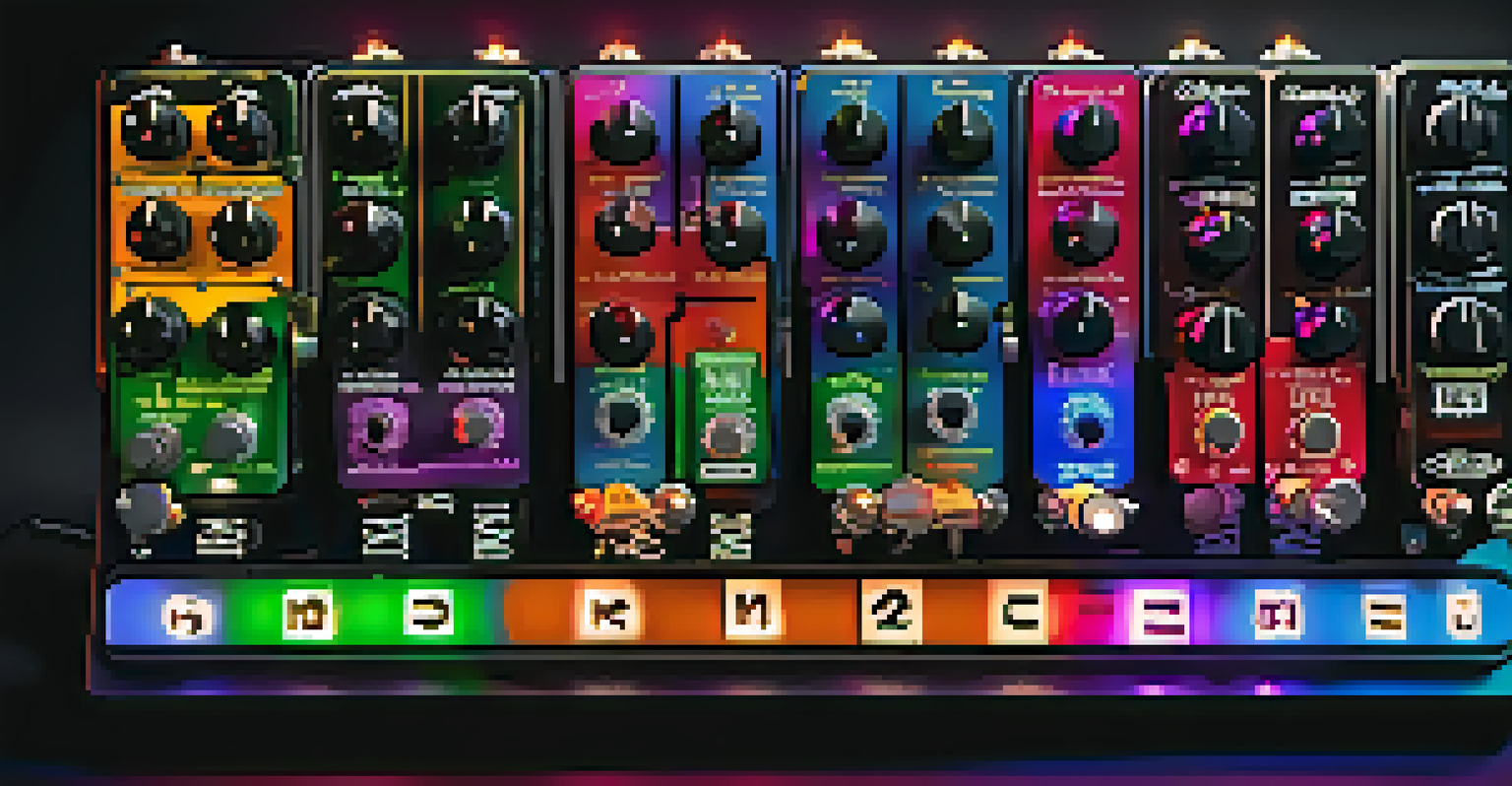Recording Ukulele with Effects: Tips and Tricks

Choosing the Right Microphone for Your Ukulele
Selecting the right microphone can significantly enhance your ukulele recordings. Dynamic microphones are great for live performances, while condenser mics capture the nuances of your instrument beautifully in a studio setting.
Music is the shorthand of emotion.
Consider the placement of the microphone, too. Positioning it about 6-12 inches away from the sound hole can provide a balanced sound, capturing both the body and brightness of the strings.
Experiment with different mic placements and types to find the sound that best suits your style. Remember, the right mic can make all the difference in achieving that warm, rich ukulele tone.
Understanding and Using Effects Pedals
Effects pedals can add a magical layer to your ukulele recordings, transforming the sound in exciting ways. Popular effects for ukulele include reverb, delay, and chorus, each adding its unique flavor to your music.

For instance, a touch of reverb can make your ukulele sound like it's being played in a spacious hall, while a delay can create rhythmic echoes that enhance your strumming patterns. Chorus pedals can thicken your sound, making it feel fuller.
Choose the Right Microphone
Selecting an appropriate microphone and its placement can greatly enhance the quality of your ukulele recordings.
Always remember to use effects sparingly at first; a little goes a long way. Building your sound gradually allows you to maintain the ukulele's natural tone while adding character.
Layering Tracks for a Richer Sound
One of the joys of recording is layering tracks to create a fuller sound. Start by recording a basic chord progression, then add additional layers, such as harmonies or counter-melodies, to enrich the piece.
The beautiful thing about learning is that no one can take it away from you.
You can also experiment with different ukulele playing techniques, like fingerpicking or strumming, to diversify the layers. This not only brings depth but also keeps the listener engaged throughout the track.
Keep in mind the importance of balance; ensure that no single track overwhelms the others. The goal is to create a harmonious blend that showcases the ukulele's charm.
Using EQ to Enhance Your Ukulele Sound
Equalization, or EQ, is a powerful tool for shaping your ukulele's sound. By adjusting different frequency ranges, you can enhance clarity, warmth, or brightness, tailoring the sound to fit your musical vision.
For example, boosting the mid frequencies can help your ukulele stand out in a mix, while cutting some low frequencies can reduce muddiness. Experiment with these adjustments to find what complements your recording best.
Layer Tracks for Depth
Layering different musical elements and techniques can create a richer, more engaging sound for your ukulele music.
Remember, subtlety is key when using EQ. Small adjustments can lead to significant improvements without altering the natural essence of your ukulele.
Exploring Different Recording Environments
The environment in which you record can drastically affect the sound quality of your ukulele. A quiet, acoustically treated room is ideal, as it minimizes unwanted noise and echoes.
If you don’t have access to a studio, consider using soft furnishings like curtains and cushions to absorb sound. This can help create a warmer atmosphere that enhances your recordings.
Don't shy away from experimenting with outdoor recordings, too. The natural ambiance can add a unique quality to your ukulele sound, making it feel fresh and lively.
Adding Vocal Elements to Your Ukulele Tracks
Incorporating vocals with your ukulele can create a beautiful synergy. Whether you're singing lead or adding harmonies, your voice can complement the instrument's cheerful tones.
When recording vocals, ensure you maintain a good balance between the ukulele and your voice. You want both elements to shine without one overpowering the other.
Mix for a Professional Sound
Effective mixing, including balancing levels and using compression, is essential for achieving a polished final track.
Try layering your vocals just like you do with your ukulele tracks. This can create a rich, harmonious sound that captivates your audience and enhances the overall feel of the song.
Final Mixing Tips for a Professional Sound
After recording, the mixing process is where your song truly comes to life. Pay attention to levels, ensuring that the ukulele, vocals, and any effects are balanced for a cohesive sound.
Consider adding compression to even out the dynamics of your tracks, which can help maintain a steady volume throughout the piece. This is especially useful for maintaining clarity in more complex arrangements.

Finally, take the time to listen to your mix on different speakers or headphones. This will give you a better idea of how it translates across various listening environments, helping you achieve that polished, professional sound.